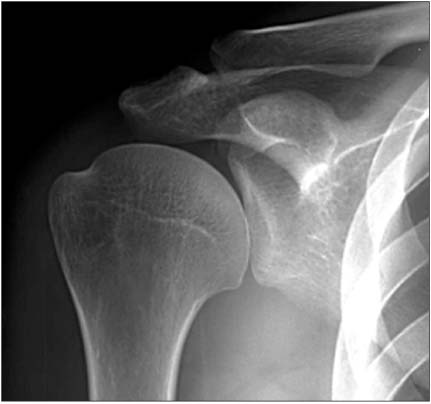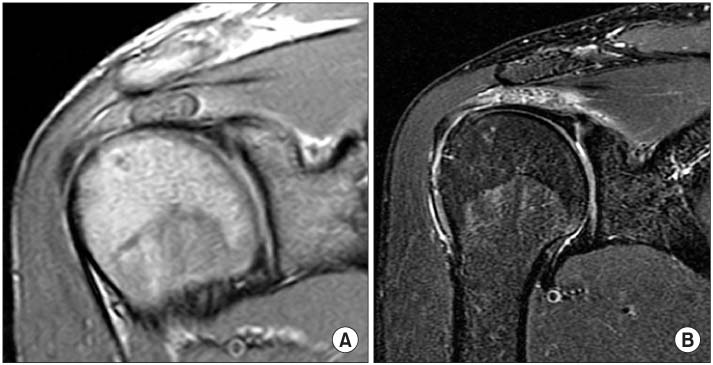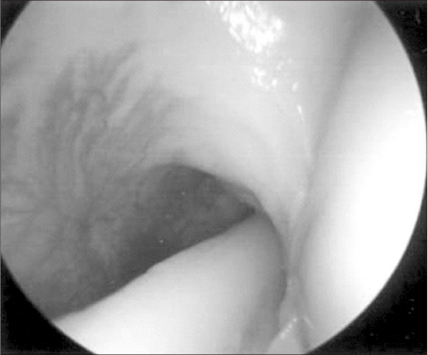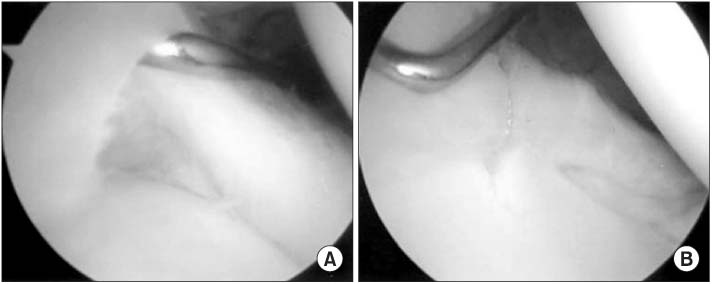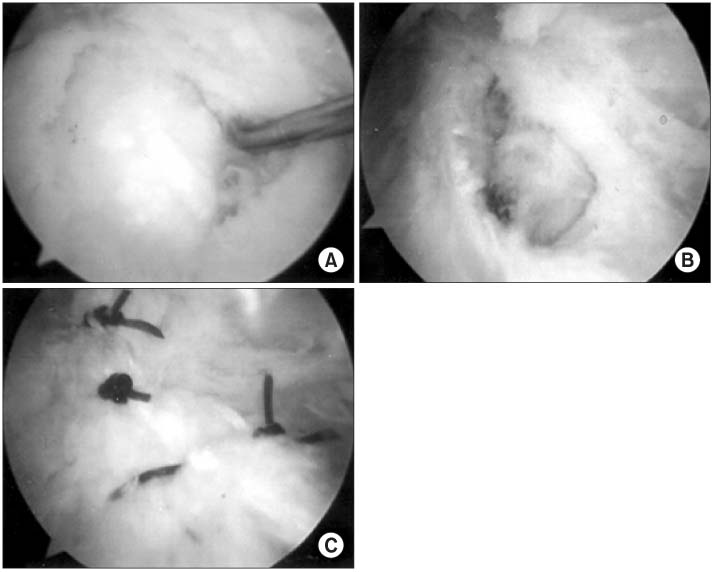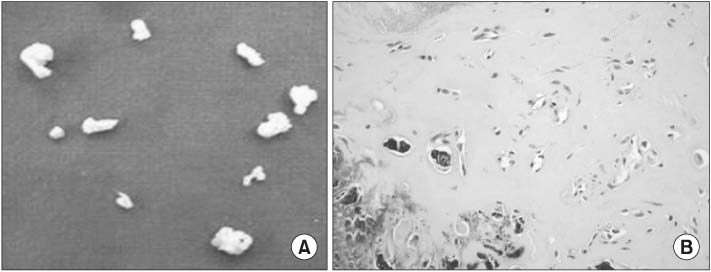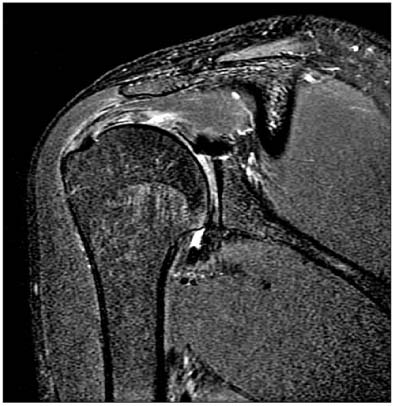J Korean Orthop Assoc.
2010 Apr;45(2):155-159. 10.4055/jkoa.2010.45.2.155.
Arthroscopic Resection of the Chondroma in the Supraspinatus of the Shoulder
- Affiliations
-
- 1Department of Orthopedic Surgery, Soonchunhyang University Bucheon Hospital, Bucheon, Korea.
- 2Department of Orthopedic Surgery, Soonchunhyang University Seoul Hospital, Seoul, Korea. kdmin@schbc.ac.kr
- KMID: 2185585
- DOI: http://doi.org/10.4055/jkoa.2010.45.2.155
Abstract
- Soft-tissue chondroma is rare a benign soft-tissue tumor that occurs mainly in hands and feet. There have been no reports of a chondroma in the supraspinatus tendon. We describe the clinical, histological and radiological features of the intratendinous chondroma of the supraspinatus occurring in a 30-year-old man who was managed arthroscopically and a review of the relevant literature review.
Keyword
Figure
Reference
-
1. Le Corroller T, Bouvier-Labit C, Champsaur P. Diffuse mineralization of forearm extraskeletal chondroma. Joint Bone Spine. 2008. 75:479–481.
Article2. Enzinger FM, Weiss SW. Enzinger FM, Weiss SW, editors. Cartilagenous soft tissue tumor. Soft tissue tumors. 1995. 3rd ed. St Louis: Mosby;991–1012.3. Kransdorf MJ, Meis JM. Extraskeletal osseous and cartilaginous tumors of the extremities. Radiographics. 1993. 13:853–854.4. Chung EB, Enzinger FM. Chondroma of soft parts. Cancer. 1978. 41:1414–1424.
Article5. Folsom GJ, Lee DH, Lopez-Ben R, Winokur T, Jaffe KA. Hand mass in a 15-year-old boy. Clin Orthop Relat Res. 2003. 412:269–275.
Article6. Aslam MB, Haqqani MT. Extraskeletal chondroma of parotid gland. Histopathology. 2006. 48:465–467.
Article7. Cherubino P, Pilato G. Intra-tendinous chondroma of a flexor tendon. J Hand Surg Br. 1991. 16:462–463.
Article8. Bansal M, Goldman AB, DiCarlo EF, McCormack R. Soft tissue chondromas: diagnosis and differential diagnosis. Skeletal Radiol. 1993. 22:309–315.
Article9. Zlatkin MB, Lander PH, Begin LR, Hadjipavlou A. Soft tissue chondromas. Am J Roentgenol. 1985. 144:1263–1267.
- Full Text Links
- Actions
-
Cited
- CITED
-
- Close
- Share
- Similar articles
-
- Calcific Tendinitis of the Supraspinatus Tendon in a 7-year-old Girl: A Case Report
- Arthroscopic Treatment of Calcific Tendinitis of Subscapularis Tendon: A Case Report
- Arthroscopic supraspinatus advancement for retracted rotator cuff tears: a technical note
- Arthroscopic Excision of Heterotopic Ossification in the Supraspinatus Muscle
- Intramuscular Lipoma of the Supraspinatus Muscle with Supraspinatus Tendon Partial Tear

